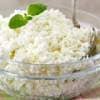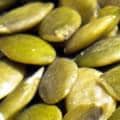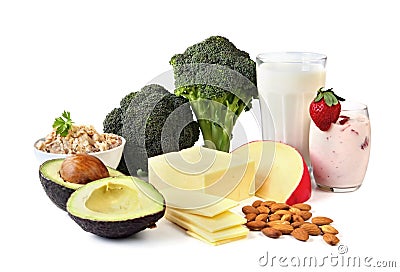1. Find a hobby.
Whether that’s bird-watching, cycling or attending the opera, a pursuit outside
of your daily routine can be especially relaxing and rewarding…and it keeps
you stronger too.
In a study on people who have undergone surgery, it was shown that those

Having a desire to pursue your interests makes life more enjoyable.
I consider myself very fortunate in that my passion is also my life’s work. I
love learning about health and wellness, sharing that information with others
and watching lives be transformed. I realize, however, that I’m in the minority.
Most people toil through their day…or even their life without ever finding
their passion. I urge you to dig deep inside yourself to discover what it is that
truly makes you happy. Passion gives meaning and happiness to your life.
2. Move it.
Physical activity is good for people of all ages. With strong muscles, you’re less likely to fall, and if you do, you’re less likely to break something. Even modest exercise has been shown to help the body, yet over 60 percent of us do not.
The benefits are many…

• Stronger bones, muscles and joints
• Reduced risk of heart problems
• Positive emotional health
• Strong short and long-term memory
The reasons people give for NOT exercising are the very same reasons you SHOULD exercise. Lack of energy is cited as the most common reason, but did you know that exercise actually increases your energy and endurance?
The more you exercise, the more energy you’ll have. A second reason for not exercising is lack of time. If you carve out the time to exercise, it makes you more productive with the rest of your day.
Regular exercise needn't be burdensome. For most people, walking is one of the easiest and no-cost activities you can do. Keep in mind that even small movements add up – take the stairs, pace during phone calls, or park at the far end of the lot. Did you know that for every 20 steps you take, you burn one extra calorie? Keep moving. Whatever activity you select, make it something you enjoy, not dread, otherwise you won’t stick to it. Be creative.
Take up fencing, learn to foxtrot, or join a volleyball team. Enlist a friend for encouragement and companionship and get fit together.
3. Go fish.
In recent years there’s been a lot of talk about the health benefits of essential fatty acids. In the 1980s it was all about Omega-6, then with the olive oil-based Mediterranean diet, Omega-9 became the rage.
While Omegas 6 and 9 are still popular and beneficial to your health, today Omega-3 takes center stage because it offers a host of benefits from head-to-toe. Unfortunately, most of us are woefully deficient in
Omega-3, especially those coming from fish sources. Could this be why you’re not feeling your best? Why things aren’t working like they used to?
Omega-3s are a group of polyunsaturated, essential fatty acids that include: alpha linolenic acid (ALA), which comes from soybeans, walnuts and flaxseed, and eicosapentaenoic acid (EPA) and docosahexaenoic acid (DHA) which come from fish. Interest in Omega-3 from fish oil began when it was discovered that Eskimos, despite eating a lot of fats, had fewer heart concerns. Eskimos, of course, eat a lot of cold water fish.

It’s believed that at one time humans were able to make the EPA and DHA conversions more efficiently, but due to our modern diet, lifestyle and the quantity of trans fats we consume from prepared, packaged and fast foods, our ability has diminished. This leaves most of us – over 90 percent – deficient and vulnerable.
What makes EPA and DHA unique is that once they’re consumed, they are readily absorbed by various tissues and cell membranes where they affect a wide range of metabolic activities. Sometimes they restrain harmful activity, like fighting free radicals. Sometimes they facilitate functions to keep you healthy. For example, in the brain they affect neurodevelopment to keep your mind and memory strong. In the heart, EPA and DHA influence electrical activity to keep heart rhythms healthy. No other fatty acids show this influence. The bottom line: while Omega-3 ALA is beneficial, Omega-3 EPA and DHA are even more so.
So who should take Omega-3 supplements? Any adult concerned about their… Heart Immune system Digestion Cholesterol Thyroid Joints
Skin Vision Memory Mood Metabolism Concentration
Cholesterol Blood pressure Reproductive health Even if you’re a vegetarian, you can still get the life-enhancing benefits of Omega-3 through plant-based supplements including Flaxseed Oil and Chia Seed Oil. There are many Omega 3s out there, and don’t get confused by all the labels. Zero in on the quantity and quality.
4. Get plenty of Vitamin D, the “sunshine vitamin.”
It’s been all over the news lately. Since many of us don’t spend much time outdoors and when we do we
use sunscreen, millions of us are missing out on this important vitamin. Today, more and more men and
women are now supplementing with Vitamin D for calcium absorption, strong bones, anti-aging support,

Recent data indicates that breast issues are much more of a concern for women living in northern climates where there is less sunshine, and it is less intense when it is
shining, than for those living in the sunny south. Vitamin D is important, but there’s always confusion
about which of the many forms available, is best. Here’s the breakdown on the two most popular forms D2 and D3.

5. Drink tea.

Tea is second only to water in worldwide consumption. While most people drink it for the flavor, over the last few years scientists have discovered that drinking tea is good for your health too. Here are some surprising reasons you should brew a cup today:
• Bolsters your immune system –Certain teas like green tea, echinacea, rose hips, and eucalyptus can boost your immunity and keep your system strong. Green tea in particular contains antioxidants, called epigallocatechin gallate (EGCG). It also contains naturally occurring trace amounts of vitamins B,C and E along with natural fluoride for your teeth and valuable minerals to support good health. There’s no doubt
that a cup of hot tea on a cold winter day soothes and relaxes while iced tea refreshes and rejuvenates on a hot summer day. For a healthy kick, sweeten with cinnamon or ginger.
• Offers digestive support. Peppermint, ginger, and papaya teas are just a few traditional tummy-helpers.
• Supports heart health. Rich, salt-laden foods, increased alcohol consumption and an irregular schedule
can be blamed for a variety heart concerns. The act of steeping then sipping a cup of tea naturally slows you
down. This is especially true of traditional tea relaxers chamomile and spearmint.
• With the addition of cinnamon, tea helps maintain blood sugar. Research shows cinnamon is a powerful
nutrient for maintaining blood sugar levels already within the normal range. This now-patented discovery
was found by accident when studying why people who ate apple pie had lower blood sugar levels. Turns out
the active ingredient in cinnamon, called MHCP, works with the blood sugar in your system. That doesn’t
mean you should binge on cinnamon buns, just add a cinnamon stick to your beverage or enjoy a cup of
cinnamon tea.
6. Get proper rest.

People who don’t get enough ZZZs are more likely than others to develop psychiatric problems, and lack of sleep can be hazardous to the public as well. Every year drowsy drivers cause more than 100,000 car accidents, 1,500 deaths and tens of thousands of injuries according to the National Highway Traffic Safety Administration. If you’re feeling sleepy while driving the NSF recommends you pull into a rest area and take a 20 minute cat nap. Caffeine will help, however, it takes 30 minutes to feel the effects, so drink some caffeine before you nap. To get a good night’s rest, practice good sleep hygiene. This includes having a bed time routine, practicing some type of relaxation like yoga or deep breathing exercises, and keeping your bedroom at a cool temperature. Studies have shown that having a TV or computer monitor in the room, even if not on, can disturb sleep rhythms, so move them out. And while alcohol can make you fall asleep quickly, it disrupts sleep in the second half of the night when your body starts metabolizing the alcohol.
During the day, make sure you have enough exposure to natural light. This is especially important for people who stay indoors most days or live in locations with long, dark winters. Light exposure, either naturally or artificially through special lamps, can help maintain a healthy sleep-wake cycle.
7. Take a good multivitamin.

Just about every week you’ll hear news reports about the efficacy of multivitamins. Are they really needed? YES! A multivitamin helps ensure you’re getting all your vitamins and minerals since, according to the Healthy Eating Index survey conducted by the USDA, most of us are not eating a healthy balanced diet every day. What’s more, as we age it becomes more difficult for our bodies to absorb and process certain vitamins and minerals from our food, adding to our nutritional deficit. If you eat fast foods, processed foods, smoke, drink alcohol or soda and rarely eat fruits vegetables and fish, a good multi is a must.
Which type of multivitamin is best…and is more expensive better? That depends. Here’s how to get the biggest bang for your vitamin buck Look for a reputable retailer. Look for a company that has a thriving business. This means they restock frequently and their products are fresh. You want a company that has stood the test of time and belongs to industry trade associations and the Better Business Bureau. Of course, you want a company that stands behind what it sells with a good guarantee.
Costly doesn’t always mean quality. The supplements industry is federally regulated, so every reputable retailer large and small must comply if they plan to stay in business. This means lesser-known brands can equal or even surpass the quality of the big brand names. And because smaller brands don’t have the big national advertising budgets and fancy packaging, they can pass the savings on to you. Check the label. The most important thing is to check that the vitamin has the proper recommended daily value. Often a manufacturer will even add slightly more of an ingredient than the label indicates to ensure that
the amount is at least the level claimed when the product nears the end of its shelf life.
You also want to make sure the vitamin is absorbable. For your body to use vitamins, it must dissolve properly.
Here’s a simple way to find out. Pour one cup of white vinegar into a glass container. Heat a bowl of water to 98 degrees and place the vinegar cup into the bowl of hot water. Place the vitamin into the vinegar cup then gently shake the vinegar every five minutes. The pill should
dissolve in 30 to 60 minutes.
8. Protect your skin.
More than 3.5 million skin cancers in more than 2 million people are diagnosed annually. 1 Even if you have darker skin, the best way to stay younger looking and avoid skin cancer is to avoid the sun. Unfortunately, that’s not always practical. To reduce the signs of aging, be sure to always wear sunscreen of an SPF of 30 or higher that offers broadspectrum protection against UVA and UVB rays and is water resistant. If at all possible avoid sun exposure between 10AM and 3 PM when the sun’s rays are strongest. Apply sunscreen to dry skin 15 minutes prior to exposure and use enough to fill a shot glass. Unfortunately, most of us don’t use enough. Reapply every two hours or after swimming or sweating.
It’s important to use sunscreen daily even on cloudy days as the sun is always emitting UV rays. In fact, 80 percent of the sun’s UV rays pass through clouds. And snow and sand increase the need as well.
There are many types of sunscreen available, but in general follow these guidelines:
• Face – cream
• Scalp or hairy chest – gel
• Area around eyes – stick
• Children – sprays but make sure all exposed skin is adequately covered
Keep in mind, use of sunscreen will limit the amount of Vitamin D you’re receiving. This is why many choose to supplement with Vitamin D
9. Eat breakfast every morning.

Research shows that people who eat a morning meal consume fewer calories and fats during the day and get more vitamins and minerals in their diet. Best of all, breakfast eaters tend to be thinner because they’ve fueled their body for the morning and are less inclined to hit the vending machine or snack in the morning. Its benefits aren’t just for adults; children show increased alertness and performance at school.
So what makes a good breakfast? A meal consisting of three components:
1) carbohydrates, like toast, fruit or cereal;
2) protein from eggs or nuts;
3) a small amount of fat from meat or butter. This combination provides fuel to last through lunch. Since no single food gives you all the nutrients it’s best to include a variety of foods.
For individuals who aren’t hungry in the morning, it’s fine to pack a healthy breakfast and eat an hour or so later.
10. Strive to eat at least five servings of fruits and vegetables daily.

Just when I was getting used to the idea of eating “5-a-Day,” new guidelines now recommend consuming eight or more fruits and vegetable servings a day. That comes out to about 4 ½ cups a day. Few of us eat that much and that’s too bad because fruits and vegetables provide lots of vitamins, minerals and other natural substances that help maintain good health. With all the fresh produce available year round there’s no excuse not to fill up. Here are a few simple tips on how you can add more to your day.
• Add broccoli florets or sliced zucchini to your pizza topping.
• With lasagna, tuck spinach, shredded carrots or sliced eggplant between the layers.
• For all sandwiches, add lettuce, tomato and onion.
• At work, snack on dried fruit instead of heading to the vending machine.
• Add grapes, apple slices and pears to your chicken salad.
• For breakfast, add broccoli, mushrooms or bell peppers to your omelet.
• Add canned veggies like sliced green beans or fresh mushrooms to your store-bought pasta sauce.
• Add fruit slices to your gelatin. My grandmother often included bananas or fruit cocktail, but experiment with any favorite fruit.
• Create “Ants on a Log.” Spread low fat cream cheese on celery and sprinkle with raisins. Kids love ‘em.
• Mix fat-free granola and fat-free yogurt. Top with berries.
While fresh is always best, canned, dried, and frozen fruits without added sugar, and vegetables without added salt or butter are also good options.
Remember, when it comes to fruits and vegetables, more matter. Make sure you’re getting more than enough by
incorporating these tips or supplements into your daily routine. Your body will thank you with ongoing good health.
By:
Dr. Karen Yale, Chiropractic Doctor
















